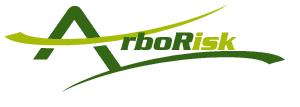Enhance Your Safety Culture
Enhance Your Safety Culture
Written by Tom Dunn
In the never ending quest to make sure every employee returns home safely each day, we wanted to take a deeper look into the concept of a company safety culture and the opportunities available for enhancing it.
We have previously touched on this topic in our weekly business tips articles (4 tips to creating a culture of safety) that included high level concepts like communication, training/employee development, preparing for safety, written procedures and having a safety “guru” on staff.
In this article we want to identify two specific, affordable and long lasting ways you can enhance your company safety culture. Both of these are offered by the only organization representing commercial tree care companies across the U.S, the Tree Care Industry Association (TCIA). Full disclosure, the author worked at TCIA for 7 years.
The Certified Tree Care Safety Professional (CTSP) and the Arborist Safety Training Institute (ASTI) are two programs that individuals (CTSP) and tree care companies (ASTI) can access to enhance their company’s safety culture.
The CTSP program is one I went through personally. I found it very helpful in my roles at TCIA and continually saw the benefits it provided to tree care companies who had individuals complete the program. The idea behind this designation is to teach an individual about the different ways the adult learner takes in information and identify their own teaching styles to help them become the safety “guru” for their organizations.
The individual going through this program can come from many different areas of a company, and depending on the size of the organization it might make sense to have more than one individual from a company obtain the designation. There are eligibility requirements, but TCIA will work with individuals to get them enrolled in the program.
The program is definitely a commitment for the individual going through it and for the company that is paying for it, but the long term benefits are far reaching for both.
There are other benefits as well. Insurance company underwriters are very interested in working with companies who have CTSP’s on their staff and offer discounted pricing for those companies. OSHA investigators are well aware of the designation and will take it into account during an accident investigation. In fact, as part of some settlement agreements, they have required companies to enroll individuals in the program.
Spurred on by Covid-19 restrictions, TCIA has made a commitment to transitioning the program to an online format. This has created the added benefit of cutting down on the travel costs that may have deterred companies from committing in the past.
To maintain their CTSP credentials, individuals must re-certify every 3 years, but there are many creative and accessible ways to obtain the CEU’s. Those who continue in the program become part of an active nationwide community for the rest of their working lives.
The ASTI program is another opportunity that not everyone is probably aware of or takes advantage of to enhance their safety culture. Smaller tree care companies who would like to bring in high quality, outside safety training, now have a way to do it affordably. Grants up to $2,000 are available to fund ½ day or full day training. You can utilize TCIA curriculum from the Tree Care Academy programs or other educational material as long as it relates back to safety topics that are important to tree care workers.
There are some caveats behind the ASTI program that you will need to consider. They have been put in place to offer quality safety training that will reach the biggest audience of tree care workers possible. For example, workshops have to be made available to all tree care workers in a particular geographic location and must be held in a neutral location (not at a tree care company shop).
The grantee is also responsible for marketing and registration for the event, but TCIA does offer materials to help as well as a list of approved instructors. There have been a number of tree care companies who have been awarded grants since the program was started. Why not your company?
Both of these programs will show your employees and potential employees that you are serious about creating a positive safety culture. Check out https://www.tcia.org/ for more information.
ArboRisk is doing its part to help companies assess their safety culture and show employees of your commitment to safety. We have developed a safety culture survey that employees can take with actionable steps for company leaders to address any safety related deficiencies identified. Call us for more information on implementing the survey and check out our Safety Package for one-on-one help.








Recent Comments